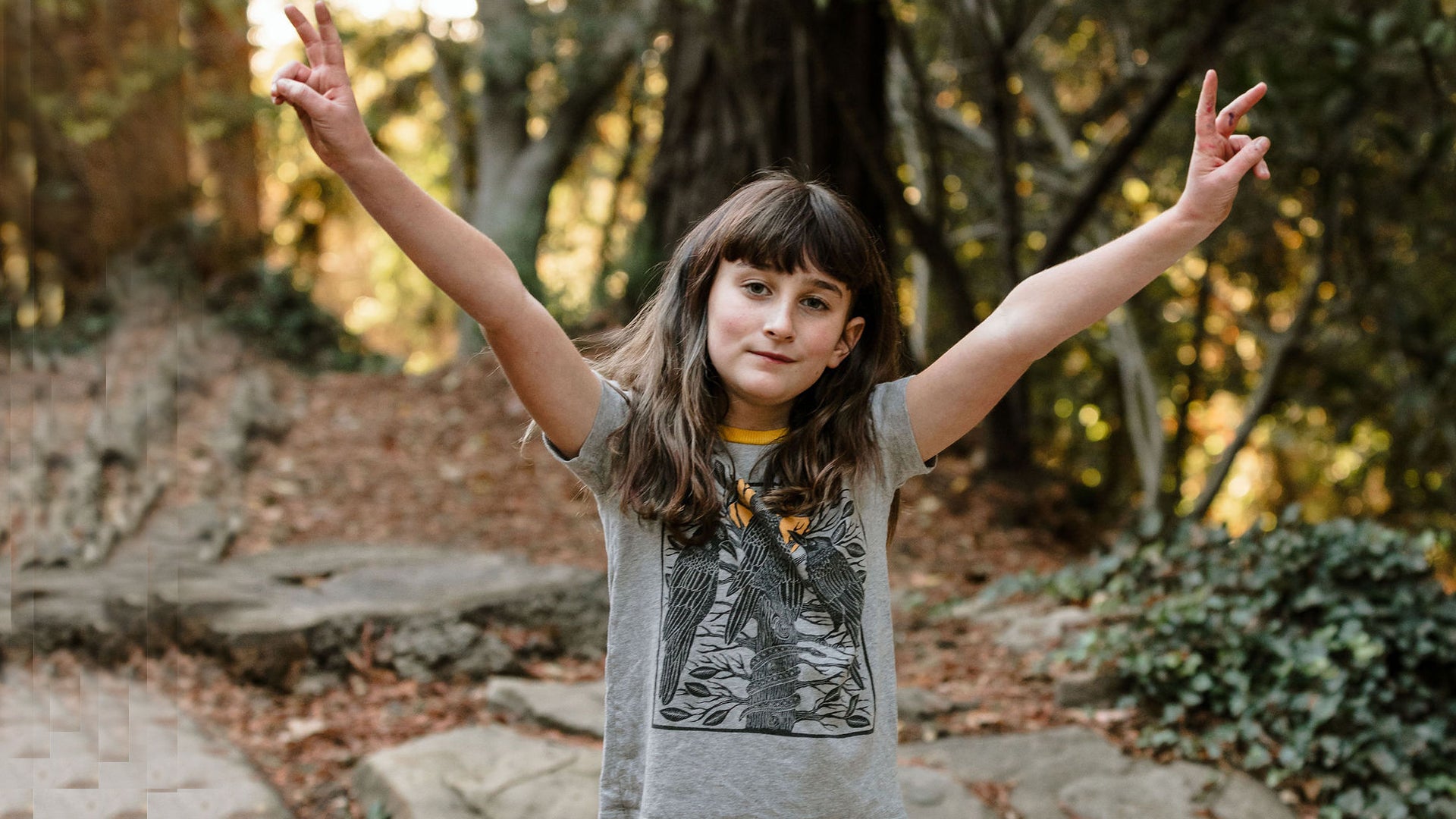Research shows that approximately 70 percent of kids ages 8-16 feel worried about the planet and its future. Have your children expressed these kinds of concerns?
Talking to your kids about sustainability and the environmental effects of fast fashion is a helpful way to introduce them to the zero-waste lifestyle and get them excited about protecting the planet.
Below, you’ll find some essential information you can share with your kids, as well as practical tips that you can implement to reduce waste and make more sustainable clothing choices.
What Is Fast Fashion?
Fast fashion involves taking ideas from fashion shows or celebrity culture and turning them into cheap, trendy clothing sold online or in stores. The goal is to get new styles on the market right away, so consumers can get them when they’re most popular.
How Fast Fashion Affects the Planet
The fast fashion world can encourage many problematic behaviors, including impulse buying, overconsumption, and clothing waste (many fast fashion items end up in landfills because they go out of style quickly and are not made to last).
Many fast fashion brands target children and teenagers, so it’s important to talk to your kids about fast fashion and its impacts.
The following are some specific adverse effects of fast fashion:
Water Waste
The fashion industry is the second-larger consumer of water. It takes roughly 700 gallons of water to produce just one cotton shirt and 2,000 gallons for one pair of jeans!
Think about how much water is used to make all the items in a fast fashion brand’s latest line.
Water Pollution
Fast fashion also contributes to water pollution. Textile dyeing causes more water pollution than almost any other industry (it also uses enough water to fill two million Olympic swimming pools).
Along with pollution from textile dyes, fast fashion also contributes to microplastic (tiny, non-biodegradable pieces of plastic) pollution in the world’s oceans.
One report estimated that 35 percent of all microplastics in the ocean get there from laundering synthetic textiles like polyester (which is used in many fast fashion items).
Increased Energy Usage
Turning plastic fibers into textiles like polyester takes a lot of energy. The process also requires significant amounts of petroleum and releases harmful substances into the air, including volatile particulate matter and hydrogen chloride.
How to Make More Sustainable Wardrobe Choices
The goal behind talking to your kids about sustainability and the fast fashion industry is not to scare them or make them feel guilty. The goal is to encourage them to make more sustainable wardrobe choices as you all work toward a zero-waste home.
The following suggestions are excellent starting points for a more eco-friendly closet:
Support Sustainable Brands
When buying new clothes for your kids, support brands that are committed to sustainable practices. Some examples include Mightly, Pact, Patagonia, and Sustain by Kat.
Sustainable brands focus on natural fabrics (cotton, bamboo, hemp, etc.) colored with safe dyes rather than synthetics like polyester. They may also have shipping programs dedicated to minimizing carbon emissions.
Buy Locally
Instead of shopping online or heading to the mall to shop for new clothes, consider visiting local boutiques. Buying locally is an excellent way to support members of your community. It also eliminates the need to have clothes shipped to you, which helps reduce carbon emissions.
Create Capsule Wardrobes
A capsule wardrobe consists of just a few key pieces that can be mixed and matched in different ways. For example, a kid’s capsule wardrobe might look like this:
- 3 shirts
- 3 pairs of pants or skirts
- 3 all-in-one outfits (overalls, rompers, dresses, etc.)
- 2 jackets or coats
- 2 pairs of shoes
Include a few matching accessories like hats, headbands, or bows to complete the wardrobe.
Change capsule wardrobes with each new season and put everything else into storage. That way, your kids get “new” clothes every few months. Rotating through their clothing this way can help it last longer, too.
Take Good Care of Your Clothes
Often, when people throw clothing away, it’s because of issues like holes, pilling, or fading. Many of these problems can be avoided with proper laundering.
Read labels carefully to avoid improperly washing clothes. Turn items inside out before washing, too, and stick to lower water temperatures, as hot water can wear clothes out faster.
Repair and Rework Before Throwing Away
Say a shirt has a hole in it, or your child has grown too tall for a pair of pants.
You don’t necessarily have to throw these items out. Get creative and think of ways to rework them into new piece.
For example, can you cut that pair of pants into shorts? Can you sew a fun patch over the shirt’s hole? There are lots of simple solutions that can extend clothes’ lifespans and refresh your kids’ wardrobes.
Buy Larger Sizes
When shopping for new clothes, consider buying items one or two sizes larger (this is especially helpful for young kids who grow quickly). Buying a larger size will allow them to wear the items longer.
Donate or Resell Used Clothing
If your child has decided they’re done with a particular piece of clothing, don’t throw it in the trash. Instead, donate it to a local thrift shop or charity so someone else can wear it. You can also resell gently used clothing at consignment stores or online.
Host Clothing Swaps
Another fun option is to organize a clothing swap with friends whose kids are the same sizes/ages as yours. Have everyone bring their gently used clothes and invite them to trade for some new-to-them pieces.
Create a More Eco-Friendly Wardrobe Today
It’s never too early to start teaching your kids about protecting the planet.
Discussions about the fashion industry — particularly fast fashion — and its impacts on the environment are great starting points, especially for those who love shopping and expressing themselves through their clothing choices.
In addition to talking to your kids about the importance of a more sustainable wardrobe, follow the guidelines listed above so you can all start making better choices today.



